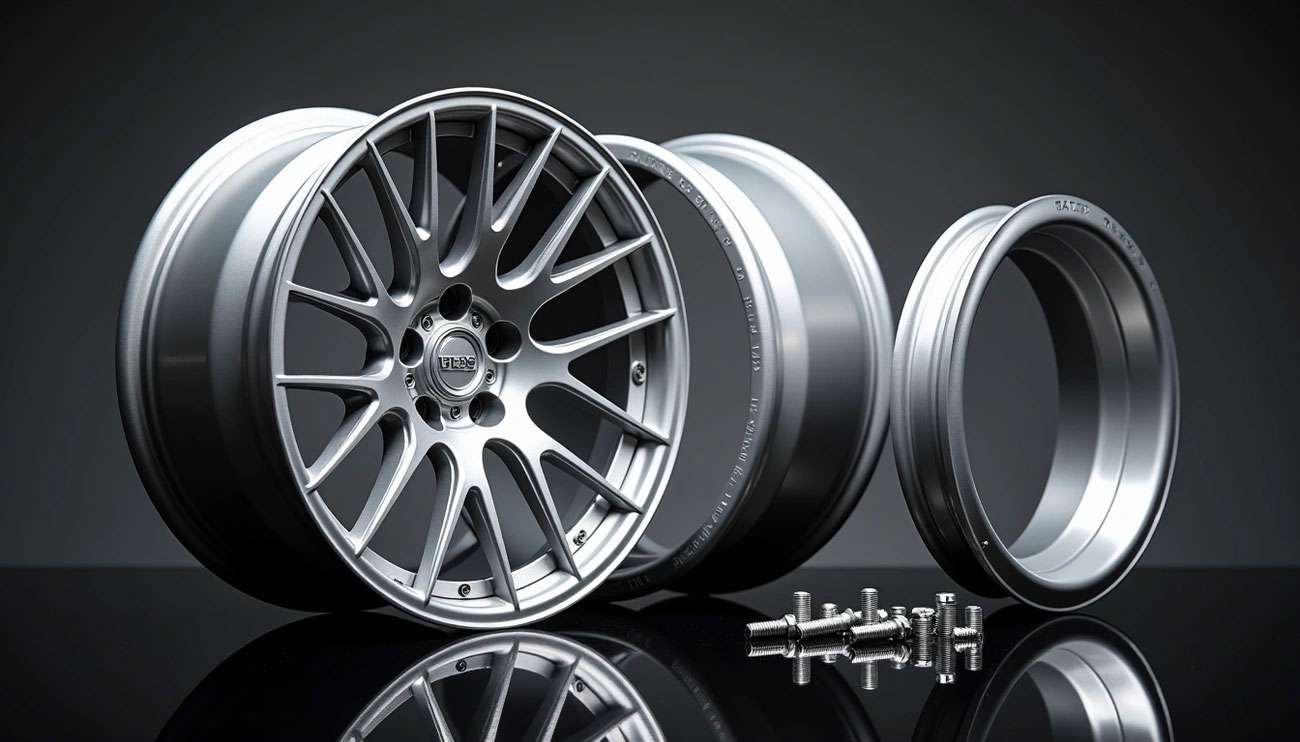
Quality 3 piece wheels often cost two to three times more than comparable one-piece wheels, leaving many car enthusiasts wondering why the price difference is so dramatic when both serve the same basic function. The answer lies in their sophisticated construction and specialized manufacturing process.
A three-piece wheel consists of three distinct components: a forged center, a spun aluminum inner barrel, and a spun aluminum outer barrel (also called the lip). This modular design allows for an almost infinite selection of fitment configurations, but comes with a premium price tag. Each wheel requires approximately 30-35 specialized fasteners, typically aircraft-grade stainless steel bolts. Top manufacturers like HRE, Vossen, and Lexani use aerospace-grade aluminum and specialized hardware to ensure maximum quality and durability.
The manufacturing process itself drives costs significantly higher. Unlike mass-produced one-piece wheels, three-piece wheels are often built to order with precision engineering and extensive hand assembly. The entry fee for owning these wheels runs steep, but many enthusiasts find the investment worthwhile due to the extensive benefits and customization options they provide.
We'll break down exactly what makes these wheels command such premium prices, explore their key advantages and potential drawbacks, and help you determine if they're worth the investment for your specific vehicle and driving needs.
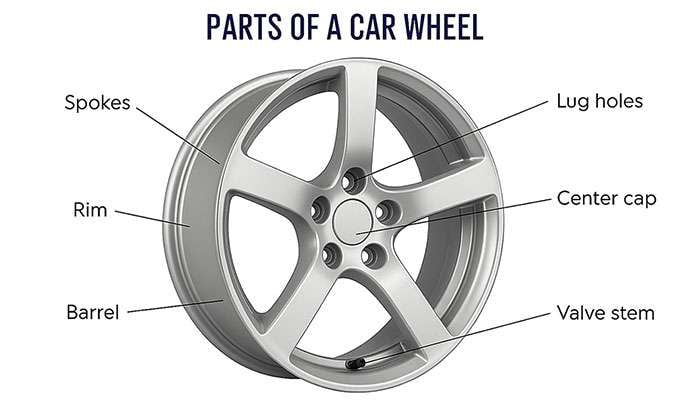
The name "3-piece wheel" tells you exactly what sets these wheels apart - they're built using three separate components that bolt together to form a complete wheel. This modular construction represents a significant advancement over traditional one-piece designs, offering unprecedented customization options for enthusiasts.
Every 3-piece wheel consists of three distinct parts that serve specific functions:
Center Section - This forms the foundation of the wheel, containing the hub mounting surface and spokes. Typically made from forged aluminum alloy, the center section is usually the most expensive component to manufacture. It connects to both barrel sections and defines much of the wheel's overall character.
Inner Barrel - Making up the inside portion of the rim, the inner barrel connects directly to the center section. You'll notice it has a longer "raised" section compared to the outer barrel. This component plays a crucial role in establishing the wheel's overall width and offset.
Outer Barrel (Lip) - This is the visible exterior portion that gives the wheel its distinctive appearance. The outer barrel houses the valve stem holes and can be manufactured in various depths to match different style preferences. Its depth directly affects both the look and performance characteristics of the wheel.
The term "three-piece" stems directly from the wheel's construction method. Each wheel literally consists of these three separate components (center, inner barrel, and outer barrel) that are joined together through either bolts or welding. This design contrasts with traditional one-piece wheels, which are cast or forged as a single unit.
This modular approach first emerged in the automotive world during the early 1970s. While there's some debate about who created the first true three-piece wheel, many credit SSR for developing the MK1 in 1971, though its inner and outer barrels were welded together rather than being fully separable. A year later, Weds produced what many consider the first true multi-piece wheel with fully separable components.
The assembly of 3-piece wheels demands precision and attention to detail. Most designs require between 30 and 35 specialized fasteners - typically aircraft-grade stainless steel bolts specifically designed for wheel applications. These aren't ordinary hardware store bolts; they're high-strength fasteners engineered to maintain integrity under extreme conditions.
The assembly process follows a specific sequence:
First, technicians clean all mating surfaces thoroughly to ensure proper sealing. Then, they assemble the three components and insert the specialized bolts. These bolts must be tightened in a specific pattern - often clockwise while skipping every second or third bolt - to distribute pressure evenly across the wheel.
Proper torquing is essential. Technicians typically start at around 15Nm and gradually increase by 5Nm increments until reaching the final specification of approximately 27Nm. Rushing this process risks stripping threads or creating uneven pressure that could compromise the wheel's structural integrity.
For wheels that use bolts rather than welding, proper sealing becomes critical. Manufacturers typically employ one of two methods:
Silicone Sealant - Applied in the valley where the components join, quality silicone creates an airtight seal. Many enthusiasts use specialized products like DOWSIL™ 832 Multi-Surface Adhesive Sealant, which is particularly effective for wheel assembly.
Gaskets - Some premium manufacturers like BBS and Speedline incorporate specialized gaskets or sealing rings between sections rather than relying solely on sealant.
Without proper sealing, 3-piece wheels can develop air leaks at their seams or around the bolts. This explains why they require more maintenance than one-piece alternatives.
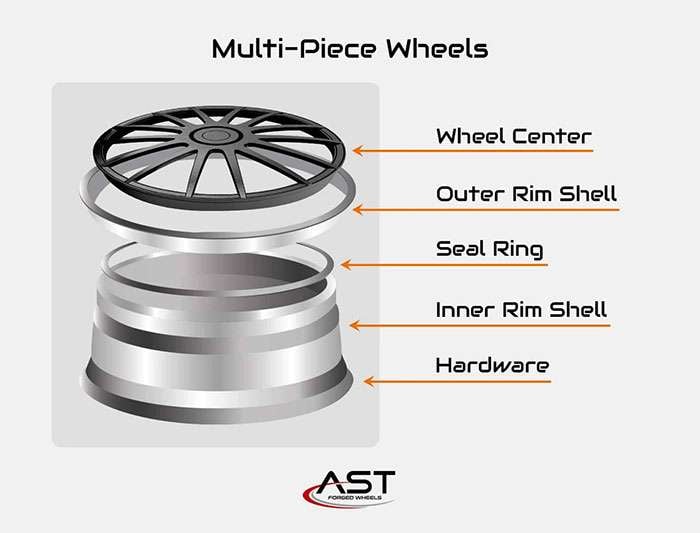
Image Source: Forged Wheels
The premium price tag of 3-piece wheels often shocks even dedicated car enthusiasts. A set of forged 3-piece wheels can exceed $10,000 compared to just $2,000 for cast alternatives. This substantial difference stems from three key factors: superior materials, meticulous production processes, and customized manufacturing.
The manufacturing method creates the most fundamental cost difference between wheel types. Cast wheels are produced by pouring molten aluminum into molds—a relatively straightforward and economical process. 3-piece forged wheels utilize highly pressurized aluminum billets precisely cut by specialized machinery to create each component's shape.
Top manufacturers like HRE, Vossen, and Lexani exclusively use aerospace-grade 6061-T6 aluminum alloy in their forged wheels. This premium material offers exceptional strength-to-weight characteristics but costs substantially more than standard casting alloys.
Forged wheels deliver remarkable longevity. With proper maintenance, they typically last seven to ten years—considerably longer than their cast counterparts. Their superior resistance to moisture damage, corrosion, and oxidation justifies the investment for many buyers.
Each 3-piece wheel undergoes a resource-intensive manufacturing journey that differs drastically from mass-produced alternatives. The process begins with separate production lines for each component (center section, inner barrel, and outer barrel), with individual quality checks required before assembly can even begin.
Forgeline builds each wheel one-at-a-time from scratch at their Dayton, Ohio facility. Their meticulous production includes "painstaking hand-grinding, sanding, and inspection" followed by a hand-applied powder coat finish. This attention to detail simply cannot be replicated in automated mass production.
The assembly process itself demands extraordinary precision. High-end assembly facilities use precision torque systems that control fastener tightness to less than 0.5% variance, ensuring structural integrity under extreme driving conditions.
Most significantly, 3-piece wheels are rarely mass-produced. Companies like 3030 Autosport proudly advertise their wheels as "custom built to your specs", reflecting the bespoke nature of the industry. This made-to-order approach means manufacturers engineer and build each wheel set individually for specific vehicles and applications.
The typical production timeline for custom 3-piece wheels stretches to about two weeks—far longer than mass-produced alternatives. This extended timeframe reflects both the hand-crafted nature of the product and the customization options available.
Customization represents another cost driver but provides tremendous value. Customers can specify custom offsets, widths, finishes, and even complete design modifications without requiring entirely new production molds. For a one-piece cast wheel, design changes necessitate new molds costing "literally tens of thousands of dollars", whereas 3-piece designs allow for much more cost-effective design iterations.
Interested in exploring premium 3-piece wheel options for your vehicle? Check out Performance Plus Tire's extensive selection to find the perfect custom-engineered wheels for your specific needs.
3-piece wheels command their premium price because they're engineered and assembled more like fine watches than mass-produced car parts—each representing countless hours of expert craftsmanship, premium materials, and bespoke engineering.
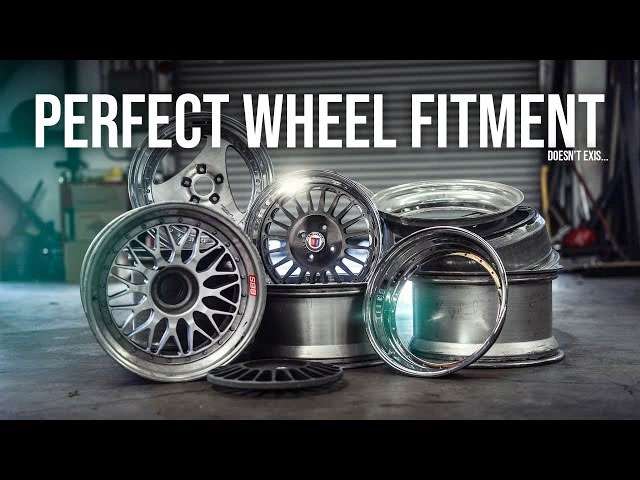
Image Source: YouTube
The most compelling advantage of 3-piece wheels is their unmatched customization potential - a feature that justifies their premium price for many enthusiasts. Unlike one-piece designs, these wheels offer fitment options that simply aren't possible with conventional manufacturing methods.
The genius of 3-piece wheels lies in their ability to create virtually infinite combinations of widths and offsets. For vehicles with extensive modifications, this flexibility becomes not just desirable but essential. Manufacturers can precisely tailor every dimension to match specific requirements by adjusting the inner and outer barrels.
This customization becomes especially valuable for stance-focused builds where wheel position impacts both appearance and performance. The offset (measured in millimeters) represents the distance from the wheel's centerline to the mounting surface. With 3-piece wheels, this can be adjusted with remarkable precision - simply by selecting different barrel combinations rather than creating entirely new wheel molds.
Width adjustments follow the same principle. Instead of being limited to standard sizes, 3-piece wheels allow for incremental width changes in both directions. You can achieve the perfect fitment for showcasing those massive lips without compromising function. As Performance Plus Tire notes, "perfect fitment eliminates the need for wheel spacers or adapters that might compromise safety or performance".
Looking for the perfect custom 3-piece wheels with precise fitment for your vehicle? Check out Performance Plus Tire's extensive selection to find wheels built specifically for your needs.
Perhaps the most practical benefit of 3-piece wheels emerges when dealing with modified suspensions or upgraded brake systems. Standard wheels often can't accommodate these changes without sacrifices or compromises.
Many performance vehicles require wheel designs that clear oversized brake calipers - a common issue with aftermarket brake upgrades. The modular construction of 3-piece wheels addresses this challenge through specialized "disk types" (referring to the center section's profile) that provide necessary clearance.
These wheels excel at supporting vehicles with:
Heavily modified suspensions affecting wheel wells
Specialized drift or track setups requiring unique offsets
Oversized calipers requiring specific clearance profiles
Custom stance requirements
Some manufacturers take this precision even further, using measurements from over 100 different data points around the car to ensure perfect fitment. This level of customization simply isn't feasible with one-piece designs.
Many 3-piece wheels feature two valve stems - a design choice that often puzzles new owners. This isn't a manufacturing mistake but rather a deliberate feature serving multiple purposes.
For racing applications, dual valve stems allow simultaneous pressure measurement and adjustment. At the track when you need to quickly adjust tire pressure - one valve can connect to a pressure gage while you inflate or deflate through the other.
This setup also facilitates nitrogen filling, a common practice in racing. The dual-valve configuration allows technicians to "fill through the bottom and bleed off from the top valve", ensuring complete air purging during the nitrogen filling process.
Modern applications often designate one valve for standard inflation and deflation while the second accommodates TPMS (Tire Pressure Monitoring System) sensors. The geometry of some wheels doesn't allow TPMS sensors to fit in the standard valve location, primarily because they need to sit on the angled portion of the wheel's drop center to prevent damage during tire mounting.
The customization flexibility of 3-piece wheels represents their most practical advantage - offering solutions for fitment challenges that would otherwise require compromises or modifications.
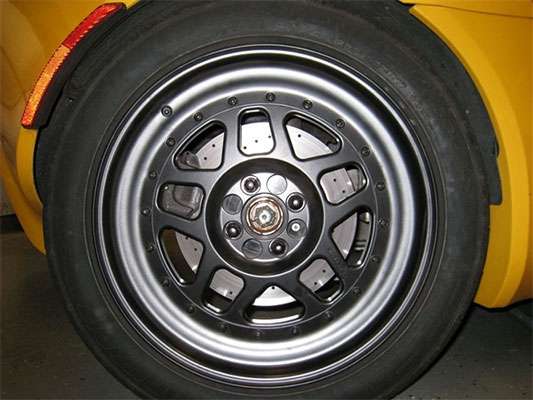
Image Source: Blackwatch Racing
Beyond their striking appearance, 3 piece forged wheels deliver substantial performance benefits that justify their premium price tag. For serious enthusiasts and racers, these wheels offer advantages that directly translate to measurable improvements on both street and track.
The performance equation for wheels is straightforward: less weight equals better performance. Forged 3 piece wheels excel in this area, typically weighing approximately 50% less than conventional alternatives. This remarkable weight reduction stems from the forging process that transforms the molecular structure of aluminum, creating stronger material that requires less volume to achieve the same structural integrity.
What makes this weight reduction particularly valuable is where it occurs—in the "unsprung mass" of the vehicle. Unsprung mass comprises everything not supported by your suspension: wheels, tires, brakes, and suspension components themselves. Reducing this weight has dramatic effects:
Acceleration improves as the engine spends less energy rotating heavy wheels
Braking distances can shorten by more than 30% with quality lightweight wheels
Suspension responds more quickly to road imperfections
Cornering becomes more precise with improved tire contact
Automotive testing confirms these benefits deliver real results. Controlled tests show that reducing wheel weight by just 12 pounds per wheel improved 0-60 mph time by 0.29 seconds, whereas the same weight reduction elsewhere on the vehicle only improved times by 0.14 seconds. This demonstrates how wheel weight reduction has roughly 2-3 times the impact of removing weight elsewhere.
Professional racing teams choose 3 piece forged wheels primarily for practical reasons, not merely aesthetics. Their modular construction provides significant advantages in competitive environments.
The most valuable benefit is repairability. Racing inevitably leads to wheel damage through impacts, curb strikes, or debris. With conventional wheels, significant damage means replacement, potentially ending a race weekend. However, 3 piece designs allow trackside repairs through component replacement—often preserving the expensive center section and only replacing damaged barrels.
Teams save considerably over a season by replacing just damaged components rather than entire wheel sets. This capability for quick returns to competition after incidents provides a strategic advantage that can determine championship outcomes.
The variable wheel wall thickness available in quality 3 piece designs optimizes wheel mass distribution. Engineers strategically place material exactly where needed for strength while removing it everywhere else. This precision engineering creates wheels that withstand extreme racing conditions while maintaining optimal weight characteristics.
The track advantages of quality 3 piece forged wheels extend far beyond mere repairability. These wheels are specifically engineered for the severe demands of competition environments.
Their engineered weight distribution optimizes rotational inertia—a critical factor affecting acceleration, braking, and directional changes. By concentrating mass closer to the hub where it has less impact on performance, these wheels respond more immediately to driver inputs.
Most premium 3 piece racing wheels incorporate specialized features like "I-beamed" spoke technology that simultaneously reduces weight and increases rigidity. This enhanced stiffness is crucial during cornering when wheels experience extreme lateral forces. Quality racing-focused designs provide generous brake clearance to accommodate oversized competition braking systems.
What's perhaps most valuable is how 3 piece designs allow engineers to achieve a perfect balance between strength and weight for specific racing applications. A wheel that's engineered with a 2100 lb. street-tire load rating ensures integrity even under the massive loads encountered with competition tires.
For drivers seeking the ultimate in performance-oriented wheels, Performance Plus Tire offers an extensive selection of premium 3 piece forged wheels specifically designed for track and high-performance applications.
The investment in quality 3 piece forged wheels delivers tangible performance returns. The combination of reduced unsprung weight, optimized strength distribution, and repairability creates competitive advantages that can make the difference between winning and losing.
Despite their premium status, 3 piece wheels require consistent maintenance to keep them performing at their best. Unlike one-piece alternatives, these modular wheels need specific care routines to maintain their structural integrity and prevent common problems.
Air leakage ranks as the most frequent complaint among 3 piece wheel owners. Most leaks develop at the seams between components, particularly where the inner and outer barrels meet. This happens because the silicone sealant between sections can deteriorate over time or was improperly applied during assembly. Even perfectly assembled wheels eventually develop seals that degrade under normal driving conditions.
To diagnose leaks, place the suspected wheel in water and look for bubbles - this instantly reveals the leak source. Often, leaks stem from loose hardware rather than failed seals. Checking bolt torque frequently resolves mysterious pressure loss without requiring complete disassembly.
The fasteners holding your 3 piece wheels together need periodic torque verification. Most manufacturers specify 15-18 ft-lbs for standard hardware, though this varies slightly depending on bolt size. For M6 hardware (common in premium brands like Fikse and Kinesis), 14-15 ft-lbs prevents over-tightening while ensuring proper clamping force.
Seasonal maintenance should include:
Thorough cleaning before storage
Complete wheel drying to prevent corrosion
Full inflation to prevent flat spots (underinflated tires develop annoying thumps when returned to service)
Visual inspection for damage, uneven wear, or corrosion
Tagging each wheel's position (FL, RR, etc.) to maintain rotation patterns
For wheels remaining on vehicles during winter, monthly application of protective products helps combat road salt damage, as even ceramic coatings cannot fully protect against salt corrosion.
The intricate design of 3 piece wheels creates cleaning challenges, typically around bolt heads and seams. Avoid harsh cleaning chemicals - particularly those containing high pH (basic) or low pH (acidic) formulations which damage delicate finishes. For stubborn brake dust, products containing iron-binding ingredients work effectively but can potentially discolor bare aluminum components.
For regular maintenance, many enthusiasts now prefer spray coatings like CarPro Hydro2 over traditional wheel waxes, as they provide excellent protection while reaching difficult areas between bolts and seams. These products create hydrophobic barriers lasting 3+ months with minimal application effort.
For polished lips specifically, consistency proves more important than aggressive cleaning. Weekly gentle washing prevents brake dust from becoming corrosive, accompanied by monthly iron remover applications and semi-annual reapplication of protective coatings.
The premium price of 3-piece wheels reflects their sophisticated engineering, quality materials, and specialized manufacturing processes. The combination of aerospace-grade aluminum components, precision assembly, and limited production runs drives costs significantly higher than mass-produced alternatives. These wheels deliver real value through unmatched customization options that solve fitment challenges impossible with conventional designs.
Performance enthusiasts gain measurable benefits from substantial weight reduction that directly improves acceleration, braking, and handling. Racers appreciate the repairability factor – replacing damaged components rather than entire wheels saves considerable money over a racing season.
Potential buyers should understand the maintenance requirements before purchasing. Regular bolt torque checks, leak monitoring, and specialized cleaning routines demand more attention than conventional wheels. Expect significant depreciation regardless of maintenance quality.
The investment decision depends on your specific vehicle needs. Show cars and heavily modified vehicles requiring precise fitment benefit most from customization flexibility. Track enthusiasts gain tangible performance advantages and repair cost savings. Daily drivers with standard suspension setups often find better value in high-quality one-piece forged wheels with fewer maintenance requirements.
3-piece wheels represent premium wheel engineering when properly maintained. Their modular construction provides unmatched performance, appearance, and customization options that conventional designs cannot achieve. Whether they're worth the investment depends on how you value these advantages against their premium price and ongoing maintenance needs.
The choice comes down to matching wheel capabilities with your specific requirements and budget. For the right application, 3-piece wheels deliver performance and customization benefits that justify their premium price.
Understanding the true cost drivers behind 3-piece wheels helps you make informed decisions about this premium automotive investment.
• Premium materials and precision manufacturing drive costs - Aerospace-grade 6061-T6 aluminum and hand assembly with 30-35 aircraft-grade bolts make these wheels 2-3x more expensive than cast alternatives.
• Unmatched customization justifies the price for modified vehicles - Infinite offset and width combinations solve fitment challenges impossible with one-piece designs, especially for stance builds and upgraded brake systems.
• Performance benefits are measurable, not just esthetic - 50% weight reduction improves acceleration by 0.29 seconds (0-60 mph) and can reduce braking distances by over 30% through reduced unsprung mass.
• Higher maintenance requirements offset some value - Regular bolt torque checks, leak monitoring, and specialized cleaning are essential, plus expect 40-60% depreciation regardless of condition.
• Best suited for specific applications, not daily driving - Track cars benefit from repairability, show cars from customization, but standard street vehicles often get better value from quality one-piece forged wheels.
The investment makes financial sense when customization needs, performance gains, or repairability benefits outweigh the premium price and ongoing maintenance commitments.
3-piece wheels offer unparalleled customization options for fitment, width, and offset. They provide significant weight reduction, improving vehicle performance. Their modular design also allows for easier repairs, as individual components can be replaced if damaged.
The high cost stems from premium materials like aerospace-grade aluminum, precision engineering, and labor-intensive hand assembly. Each wheel requires 30-35 specialized fasteners and is often custom-built to order, resulting in low production volumes and higher manufacturing costs.
Yes, 3-piece wheels demand more upkeep. Regular maintenance includes bolt torque checks, leak monitoring, and specialized cleaning routines. The modular design can also lead to potential air leakage issues at the seams between components over time.
For most daily drivers, 3-piece wheels may not be the most practical choice due to their higher maintenance requirements and cost. However, they can be worthwhile for show cars, heavily modified vehicles requiring precise fitment, or enthusiasts who value their unique esthetics and performance benefits.
3-piece forged wheels can significantly enhance performance by reducing unsprung mass. This weight reduction can improve acceleration, braking, and handling. In some cases, reducing wheel weight by just 12 pounds per wheel can improve 0-60 mph times by nearly 0.3 seconds.